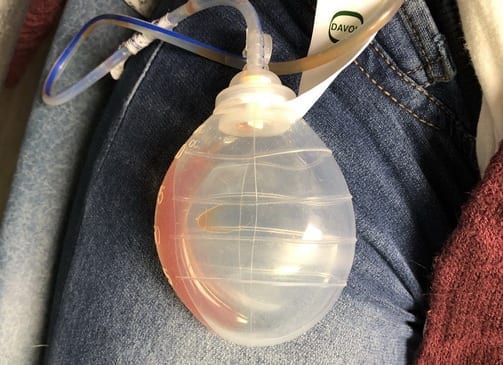- 719 West Hamilton Ave, Eau Claire, Wisconsin 54701
- (715) 832-1044
Drain Removal

We always place a drain when we perform a cleft lift, and it needs to be removed at some point after the surgery. Usually, it is around post-op day five to seven, but sometimes it has to remain in longer because of excessive output. We need at least five days to have elapsed since surgery, and the total 24 hour output to be at, or below, 20 cc/day; and nothing looking infected. If you went home with a drain in place, we will want you to communicate with us before removing it.
For reference, this is called a “closed suction drain” or a “Blake Drain”, or is often inaccurately called a “JP Drain” (this is short for Jackson-Pratt Drain, which is similar to a Blake Drain).
In order to remove the drain:
- The drainage should be at or under 20 cc per day
- The character of the fluid should not look infected (infected fluid looks very cloudy or creamy)
- There should not be any redness of the incision suggesting infection
- There should be no fluid draining through the incision or around the drain at the point where it enters the skin.
- Pain should be improving daily, rather than worsening.
If you are going to do this at home, or have it removed by a local health care individual, it is best that you send us a photo of:
- The drain output record
- The incision from top to bottom
- The color of the drainage
With that information, we can tell if it safe to remove the drain, and give you the go-ahead to proceed.
If you are coming to our office for removal:
There is no specific preparation, other than bringing the drain output record.
How painful is drain removal?
Most patients feel no pain, or just a little discomfort as it is removed. It is an unusual patient who finds it uncomfortable. Some patients take extra pain medication before the office visit – but usually agree afterwards that it wasn’t really necessary.
Instructions for drain removal
The procedure is the same whether this is done by a family member or health care personnel:
- Remove any tape holding the drain in place and any dressing over the drain insertion site.
- Cut the black suture holding the drain in place. It is a loop, and be careful to only cut one limb of the loop.
- Slowly withdraw the drain. It is very smooth and should come out very easily. The part inside is about 4″ long.
- Place a dry dressing over the hole where the drain entered the skin. This is to keep any additional drainage off clothing. Do not put any ointment on the hole. Change the dressing daily until it develops a scab, at which point a dressing is not needed. It is OK to remove the dressing and shower at any point.
- If there was any redness around the drain site, it will usually quickly resolve once the drain has been removed.
- Below is a short video of how it looks when a drain is removed.
Instructions Going Forward
- Remove the Steri-Strips two weeks after surgery, or sooner if they start coming loose.
- Remove any excess adhesive from tape or Steri-Strips with nail polish remover.
- Please send us photos of the entire incision two weeks after drain removal. It is important that you send the kind of images that we need in order for us to properly evaluate your progress. This page describes the kind of photos we need.
- Continue tucking gauze in next to the lowest part of the incision for a month from surgery.
- Continue taking the vitamins and supplements, and eating a high protein diet for at least 6 weeks from the surgery.
- Continue to be gentle with the incision for a full 6 weeks from the surgery.
